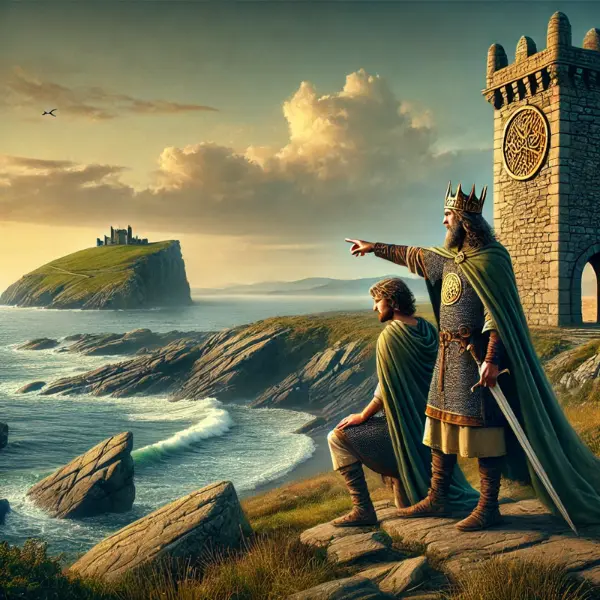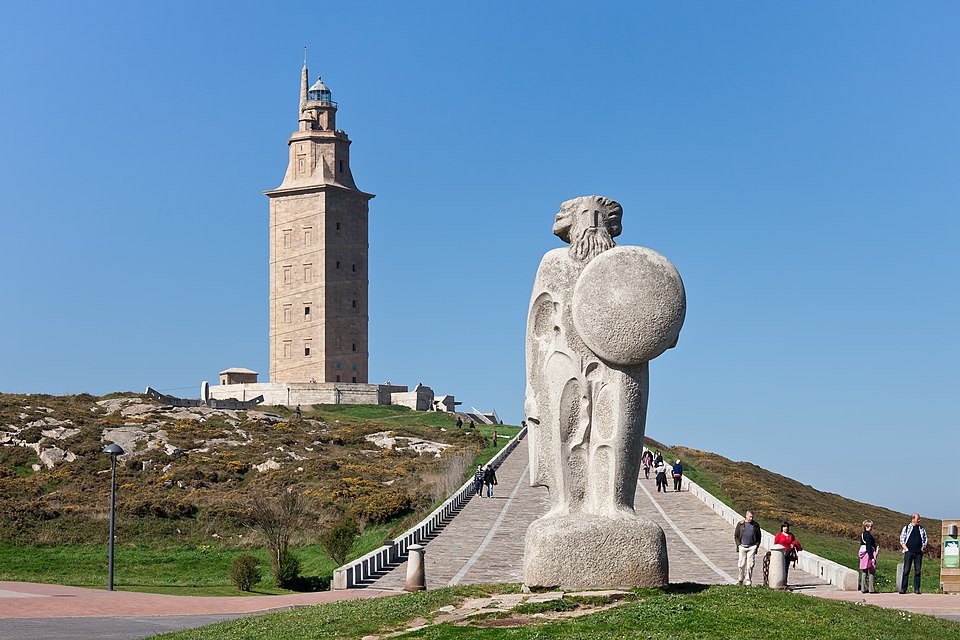Did the Irish People Come from Spain?
Ireland’s ancient past is full of stories that blur the line between Irish myths and memory. One of the most intriguing of these tales asks a surprising question: Did the Irish people come from Spain?
This idea isn’t just the stuff of legend—it’s rooted in one of Ireland’s oldest texts, The Book of the Taking of Ireland (Lebor Gabála Érenn), which tells the story of King Breogán, a noble leader from Galicia in northwest Spain. According to the myth, Breogán’s descendants sailed north and became the ancestors of the Irish Gaels.
But how much of this is fantasy, and how much could be true? As it turns out, modern genetics and archaeology might hold some clues that echo this ancient story.
Let’s explore the legend of Breogán, the Galician city of A Coruña, and the fascinating possibility that Ireland’s roots stretch further south than we once believed. Let’s see if we can shed some light on the question: Did the Irish people come from Spain?
Table of Contents
Who Was King Breogán?

In Irish mythology, King Breogán (or Breogán mac Brath) is remembered as a great leader who ruled in Galicia, the region in northern Spain that juts out into the Atlantic. His tale is recorded in the medieval Irish text, the Lebor Gabála Érenn (The Book of the Taking of Ireland), which outlines the mythical origins of the Irish people.
Breogán is said to have founded a great city—often associated with A Coruña—and constructed a towering structure within it. This tower would become the stuff of legend. From its summit, his son Íth is said to have spotted the distant, green coastline of a mysterious island to the north: Éire (Ireland).
This moment would change everything.
The Tower and the Vision of Ireland
According to the story, Íth was so enchanted by the sight of Ireland that he set sail to discover the land for himself. Tragically, he was killed upon arrival, but his death would not go unanswered.
Breogán’s descendants, known as the Milesians, launched a full-scale expedition to Ireland. They battled the Tuatha Dé Danann, the magical inhabitants of the land, and eventually became the ancestors of the Gaels—the Irish people as we know them today.
This tale of distant homelands and brave seafaring ancestors became a cornerstone of Irish mythological history.
A Coruña and the Tower of Hercules

In the modern city of A Coruña stands the Tower of Hercules, an ancient Roman lighthouse that dates back nearly 2,000 years. While it was built long after Breogán’s time, many in Galicia have come to associate this landmark with the legendary tower of Breogán.
Today, Breogán is honoured as a founding figure in Galician culture. Statues of him stand proudly in the city, streets bear his name, and his tale is remembered as a shared thread between Spain and Ireland.
Culturally, the connections are rich too. Galicia and Ireland share similar traditional music styles, with the gaita (Galician bagpipes) echoing the sound of Irish pipes. Festivals, folklore, and even echoes of ancient Celtic customs still linger in the region.
Could the Irish Have Come from Spain?
While Breogán himself is a mythical figure, modern research suggests there may be a historical basis for the idea of ancient migrations from Iberia to Ireland.
Genetic studies have shown strong links between the populations of Ireland, Galicia, and other parts of northern Spain. The R1b haplogroup, for example—a specific Y-DNA lineage—is extremely common in both regions, hinting at a shared ancestry.
Archaeologists have also identified patterns of trade and migration along the Atlantic seaboard, suggesting that ancient peoples travelled by sea from Iberia, through Brittany, and up to Ireland long before the time of recorded history.
In this way, the myth of Breogán might echo a much older truth—one of real journeys, real people, and real connections between these Celtic lands.
Myth and Memory: Why It Matters
Legends like that of King Breogán are more than just tales. They carry with them cultural identity, ancestral pride, and a sense of belonging that links us not just to Ireland, but to other Celtic peoples across the sea.
They remind us that the past is not always fixed and that in the interplay of myth and memory, we sometimes uncover forgotten truths.
By keeping stories like Breogán’s alive, we honour not just the legend—but the heritage, the possibilities, and the shared roots they represent.
Conclusion
The tale of King Breogán, the Tower in A Coruña, and the voyage to Ireland is a shining example of how myth and history dance together in Irish tradition. Whether seen as symbolic lore or distant memory, it’s a story that speaks to our deep connections with the wider Celtic world.
Next time you look west across the Atlantic, you might wonder—who were the people that came before us? And could they have once stood, like Íth, on a tower in Spain, dreaming of the green island we now call home?
Have you visited A Coruña or heard the legend of King Breogán before? Share your thoughts in the comments or on our Facebook page, Retrobite Ireland. Let’s keep the story alive.
